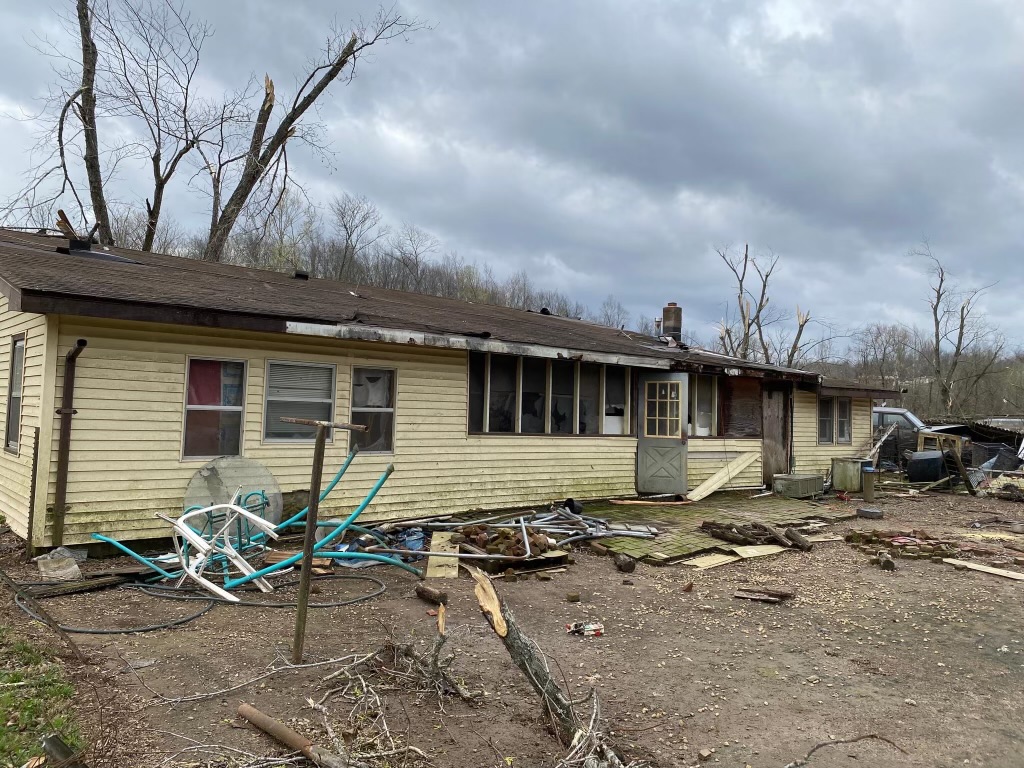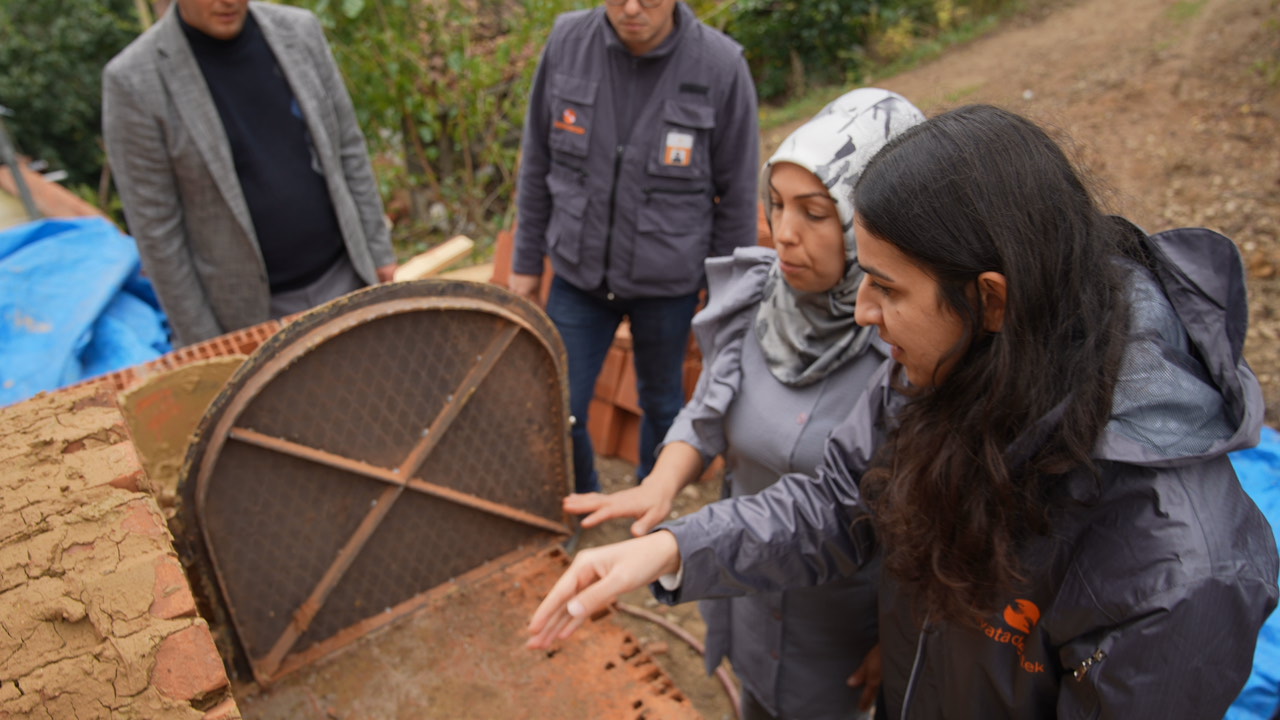What we’re watching: Weekly disaster update, April 10

We know all too well that disaster can strike anytime, anywhere in the world. Some disasters make headlines; others do not. Here at the Center for Disaster Philanthropy (CDP), we monitor the status of disasters worldwide and compile a list of the ones we’re tracking weekly, along with relevant disaster-related media coverage.
Here’s what we’re watching for the week of April 10, 2023.
New or Emerging Disasters
Tornadoes – U.S.: A tornado in Bollingwood County, Missouri – across the Mississippi River from Illinois – killed five people when it touched down at 3:30 a.m. on April 5. The twister was on the ground for 15 minutes and traveled 15-20 miles. An EF-2 storm, it was one of nearly a dozen to hit the multi-state area. Missouri Governor Mike Parson said in a press conference that 12 structures were destroyed and more than 70 were damaged, but no breakdown was given for type of structure. Two tornadoes hit Fulton County, Illinois. One, an EF-1, caused minor damage, but an EF-3 was on the ground for 24 minutes and traveled 18.7 miles near Canton. Four people were injured.
Learn more about 2023 tornadoes in our 2023 US Tornadoes disaster profile.
Tornadoes – New Zealand: The region of Tasman was hit by a rare New Zealand tornado in the afternoon of April 10. Roofs were lifted off homes and power lines downed. At least 50 homes were affected. Hail as big as .4 inches also fell during the storm system. This twister followed one in East Auckland just after 9 p.m. local time on Sunday, April 9. The East Auckland tornado also damaged homes and trees. Power is out in numerous locations and may not be restored until Tuesday, April 11.
Avalanche – India: An avalanche in the northeast state of Sikkim, killed at least seven people and injured 13 on April 4 after a large avalanche. A popular tourist destination, the avalanche hit Jawaharlal Nehru Road, near Nathula Pass on the India-China border. After the roads were cleared, 350 tourists and 80 vehicles were rescued.
Ice Storm – Canada: An ice storm on April 6, left more than 1.1 million without power in the Montreal region of Quebec. As on noon ET on April 10, the number had been reduced to about 35,000. Two people died during the storm – one from a falling tree and one from carbon monoxide poisoning, and more than 180 people were treated for carbon monoxide poisoning.
Previous/Ongoing Disasters
Tornadoes – U.S.: – Tornadoes have continued across several U.S. states, with the total for 2023 now exceeding 418 confirmed twisters, with 65 already in April. All the deaths – almost 70 – from tornadoes worldwide, save one in Saudi Arabia, have happened in the U.S. This year’s tornadoes are more frequent, stay on the ground longer and are happening later at night.
Learn more about 2023 tornadoes in our 2023 US Tornadoes disaster profile.
Floods – Multiple Countries: It feels at times, as if this post is all flooding, all the time. This week is no different, with numerous floods to report on, including:
- Ethiopia: “The United Nations reports that flooding and heavy rain have affected or displaced around 240,000 people in several regions of Ethiopia since mid-March 2023. At least 29 people have died.”
- Kenya: “Heavy rain fell in hilly areas surrounding the settlement of Kironge in Mwatate Sub-County on 02 April, triggering flash floods. Four people from the same family – an expectant mother and 3 children – were reported missing after their home was swept away late on 02 April. The body of one of the victims was later found.”
- Indonesia: “Disaster authorities in the country said heavy rain from 29 March caused the Kapuas River to overflow, triggering severe flooding in at least 14 villages in Central Kapuas District, Kapuas Regency, Central Kalimantan. Approximately 4,166 houses have been flooded, affecting 16,234 residents. In addition, around 70 public buildings, 32 schools, and 11 health facilities were also flooded. Roads were flooded in around 70 locations.”
- Burundi, Rwanda and the Democratic Republic of the Congo: “Days of heavy rain have taken their toll in Burundi, where at least 14 people have died in floods and landslides over the past week. Floods and landslides have also been reported in the neighbouring countries of Rwanda and the Democratic Republic of Congo.”
Marburg Virus Disease – U.S./Equatorial Guinea/Tanzania – In response to two Marburg virus disease (MVD) outbreaks, the Centers for Disease Control and Prevention (CDC) issued a warning Thursday, April 6 to U.S.-based public health departments and medical staff. The CDC encouraged clinicians to look out for instances of this rare Ebola-like virus. So far, MVD has only been found in Equatorial Guinea and Tanzania, but neither country had experienced outbreaks before this year. As of March 22, there were nine laboratory-confirmed cases and 20 probable cases since the outbreak was declared in Equatorial Guinea in February. Almost everyone has died. The first outbreak in Tanzania was declared on March 21, with eight total cases, five of whom died.
In addition to the disasters listed above, we actively monitor the following disasters or humanitarian emergencies. For more information, see the relevant disaster profiles, which are updated regularly.
- Afghanistan Humanitarian Crisis
- COVID-19 Coronavirus
- Horn of Africa Hunger Crisis
- 2022 Pakistan Floods
- Tropical Cyclone Freddy
- 2023 Turkey-Syria Earthquake
- Ukraine Humanitarian Crisis
U.S. Midwest Low-Attention Disasters
The Midwest is regularly faced with low-attention disasters that affect people across the region. CDP’s Midwest Early Recovery Fund (ERF) effectively funds efforts that catalyze equitable disaster recovery.
These are some of the latest disasters and related news the ERF team is monitoring:
- In Minnesota, melting snow led the Twin Cities to issue flood warnings for both the Mississippi and Cannon According to Health and Human Services, “This spring season, approximately 146 million people are at risk for flooding in their communities, with nearly 6.4 million at risk for moderate flooding and 1.4 million at risk for major flooding.”
Complex Humanitarian Emergencies – Sudan
Many places worldwide are experiencing emergencies caused by conflict, climate change, drought, famine, economic challenges and other conditions that combine to create a complex humanitarian emergency (CHE). CDP maintains complete profiles on several CHEs, and what CDP considers Level 1 CHEs are profiled in this weekly blog post and tracked.
In October 2021, Sudan’s military, led by General Abdel Fattah al-Burhan, seized power from a transitional government. On April 5, Sudan’s military leaders and a coalition of civilian groups postponed the signing of a deal to begin a new political transition to democracy.
Distrust between the military and civilian groups was a persistent characteristic during the 2019-2021 power-sharing arrangement. Tensions are high due to a civilian demand to gain oversight of the military and the pursuit of justice over allegations of war crimes by the military in the Darfur conflict from 2003.
Additionally, the army chief, General Abdul Fattah al-Burhan, and a powerful paramilitary commander, Lieutenant General Mohamed Hamdan are jockeying for power leading to increased concerns around the potential of open conflict.
Billions of dollars in international support and debt relief were paused after the 2021 coup, worsening the economic crisis and humanitarian situation in the country. In 2023, a total of 15.8 million people, nearly one-third of the country’s population, need humanitarian assistance.
A Rapid Gender Analysis on Power and Participation conducted by CARE in Sudan’s Kassala State showed women are often not consulted and social norms are a key barrier towards greater inclusion. The report highlights opportunities to enhance women participation and leadership. Despite above-average cereal production this year due to favorable weather, the Famine Early Warning Systems Network says levels of acute food insecurity are expected to deteriorate further.
In their Sudan Humanitarian Snapshot released on April 5, the UN Office for the Coordination of Humanitarian Affairs said, “Localized conflict and insecurity continue to displace thousands of people and disrupt lives in parts of Sudan.” Additionally, a dengue fever outbreak has spread across 12 states and a polio outbreak has affected 58 children.
Sudan also hosts more than 1.14 million refugees and 3.7 million people are displaced within the country. In 2022, more than 349,000 people, including refugees and host communities, were affected by devastating floods. As of April 6, donors had funded just 12.9% of Sudan’s 2023 Humanitarian Response Plan.
Upcoming webinars

April 13: Nothing about us without us: Disasters and disabilities

May 11: Older adults and disasters: Overcoming stereotypes and strengthening inclusion

June 8: Survivor and community-led response: Putting people first in a crisis
What We’re Reading
- Research Is Critical for Effective Aid. So Why Aren’t Researchers from the Global South Getting Funded? – Inside Philanthropy: “Humanitarian research is critical to delivering effective aid to affected people, and that makes it a key tool and consideration for philanthropists around the globe. However, it has historically been dominated by research institutions and nongovernmental organizations in the Global North, often excluding institutions and researchers from the Global South.”
- WHO declares two more nations, Azerbaijan and Tajikistan, malaria-free – The Washington Post: “Although it’s preventable and treatable, malaria still kills more than 600,000 people worldwide each year. But the number of nations free of the disease is growing — and now officials have declared two more nations, Azerbaijan and Tajikistan, as malaria-free. The announcement brings the official count of malaria-free territories and nations to 42.”
- The perfect storm: the US city where rising sea levels and racism collide – The Guardian: “Charleston’s failure to plan regionally does not make it unique, but its many-layered history of racism taken together with more than three decades of out-of-control gentrification and development makes that failure particularly glaring. Black residents of Charleston have barely been consulted by the city officials leading its spray of uncoordinated planning initiatives.”
- Is Tornado Alley shifting due to climate change? Scientists explain how warming climate affects tornado activity – ABC News: As the planet’s temperature climbs, experts believe we will see more tornadoes, in new places, with increased strength and endurance.
- Pāpāmoa: The holiday hotspot residents call a ‘tsunami death trap’ – Stuff: “NIWA’s hazard analyst Ryan Paulik said expanding areas such as Pāpāmoa result in increased population exposure to tsunami hazards. In summer months, population swells even more. The region’s appeal to young families and retirees means a significant part of the population is vulnerable.”
- Miami and New Orleans face greater sea-level threat than already feared – The Guardian: “Coastal cities in the southern US, including Miami, Houston and New Orleans, are in even greater peril from sea-level rise than scientists already feared, according to new analysis. What experts are calling a dramatic surge in ocean levels has taken place along the US south-eastern and Gulf of Mexico coastline since 2010, one study suggests, an increase of almost 5in (12.7cm).”
- Once viewed as food for the poor in Haiti, this staple crop is vying for UNESCO recognition – Miami Herald: Cassava is a staple crop that feeds nearly a billion people around the world, including in Haiti where it’s also helping to create jobs. Now Haiti and four other countries — Cuba, Dominican Republic, Honduras and Venezuela — have joined forces to ask UNESCO to recognize cassava, whose flour makes a popular flatbread, on its Intangible Cultural Heritage List.
While the merits of AI can be debated, especially use of artwork, we have been exploring how it might be useful to further the discussion of disasters. We recently came across this post from Andrew Rumbach, which highlights different AI-generated disasters, in various art styles. I like the cartoon version of the Pompeii eruption and the realist painting of the 1919 Great Boston Molasses Disaster.
